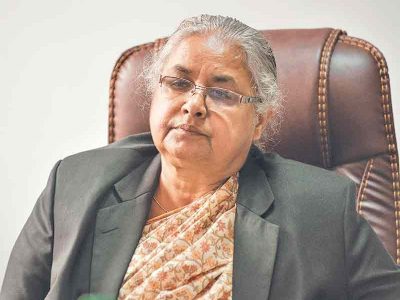The Wonders of “Our Planet”: A Review

Image Credit: Pixabay.
Kathmandu. Netflix’s nature documentary series ‘Our Planet’, narrated by Sir David Attenborough presents the unique and precious wonders of our natural world, coupled with brilliant filmography. A Silverback Films production with the creators of the award-winning Planet Earth, Alastair Fothergill and Keith Schley, and produced in partnership with World Wildlife Fund, the series comprises of eight episodes, each highlighting a certain habitat along with the cornucopia of life it harbors.
“The ambitious four-year project has been filmed in 50 countries across all the continents of the world, with over 600 members of crew capturing more than three and a half thousand filming days, and will focus on the breadth of the diversity of habitats around the world, from the remote Arctic wilderness and mysterious deep oceans to the vast landscapes of Africa and diverse jungles of South America,” is Netflix’s introductory synopsis for the motion-picture magic.
The first episode of ‘One Planet’ commences with a brief history of our planet, stretching across millennia from the early origins of Homo sapiens to the modern times. The wildlife has declined rapidly in the past century, and as the human population is rising across the planet, it is starting to have a slow yet tremendous impact on our finely balanced ecosystem. Sir Attenborough warns us that the comfort of our environment will not be the same if we remain oblivious, and that we must act now to save our home, Earth, for future generations.
The second episode, ‘Frozen Worlds’ explores the life that exists within the poles from penguins in the Antarctic to polar bears and walruses in the Arctic. It highlights the dwindling of polar ice as a result of climate change further illustrating the decrease of wildlife as a result of food chain alterations. The episode is a reminder of how fragile our planet is and the threat climate change, both human-induced and natural, is having on our polar regions which could cost the rest of the planet heftily.
‘Jungles’, the third episode, exhibits the green world as a myriad of microcosms and containing a confusing variety of life, all intricately linked, where life has evolved to adapt to its vicinity, but has been disappearing due to deforestation. The episode showcases the beauty of species like preening birds, intelligent orangutans, and remarkably ambitious ants, stressing on the message that once we lose parts of our jungles, we can lose species forever.
Our coastal seas are a rich community of plants and animals working together, all of which are vital to the health of our planet and humanity. The fourth episode ‘Coastal Seas’ enunciates the need for natural harmony for the once vibrant coasts to return to its glory. Sharks, urchins and almost 90% of the marine life dwells on the coastal seas, however, obliviousness towards climate change, uncontrolled fishing amongst many contributing factors is causing a domino effect with a dip in marine flora and fauna numbers.
In the episode ‘From Deserts to Grasslands’, cameras follow desert elephants seeking sustenance, bison roaming North American grasslands and caterpillars living the good life underground. The episode, as does others, seeks to embed in the viewers’ minds the impact that the interconnected damage of climate change has brought along as we see animals struggling to find food for their sustenance, most of it connecting to the choices made by humans.
In the sixth episode ‘The High Seas’, the deep, dark and desolate ocean that is home to an abundance of beautiful and downright strange creatures is explored. The oceans beyond the coasts, owned particularly by no one and thus called international waters, are the world’s largest ecosystems, vital to everyone and owned by no one. The episode exhibits whales, sharks, turtles, tuna and albatross and home to mysterious deep-sea creatures which are the true wilds of our planet.
Episode ‘Fresh Water’ discusses the need for fresh water for numerous lives to sustain. With increasingly unpredictable supply however, a great risk is posed for all manner of species. With fresh water being one the most precious resource on our planet, the lesson attempted to send across is that it is finite, thus, each drop is vital for all living beings that rely upon it. Humankind is continually disrupting the flow of fresh water which no longer reaches the places like it used to and to the people and wildlife that desperately require it.
The eighth episode ‘Forests’ examines the interdependence, extremely fragile in nature, that exists between forests’ wide variety of its inhabitants, including bald eagles, hunting dogs and Siberian tigers. Yet again, the spotlight is brought upon the damages that the forests have to bear as a result of human encroachment, endangering the lives native to it.
Across the board, the docuseries is a cinematic marvel that presents varied corners of the world in one basket. The beauty of our planet, is absolutely breathtaking owing to the efforts of the production paired Sir Attenborough’s narrative charm. At a glance, the series is refreshing, however, profoundly, it is a masked plea for a prompt action against the ill we do as human beings to halt or rather reverse the devastating effects of climate change. Lastly, it emphasizes, through the historical evidences, that nature will overcome the damages and replenish itself, and that human need to save themselves through their proactive actions.
Facebook Comment
latest Video
Trending News
- This Week
- This Month

















